21 Keystone Species in Rainforests – Location, Habitats, Roles, etc.
In the lush and intricate ecosystems of rainforests, the concept of keystone species stands as a fundamental pillar in understanding the delicate balance of life that exists within these biomes.
Keystone species are organisms that exert a disproportionately significant influence on their environment, despite their relatively low abundance or biomass. The phenomenon was initially articulated by the American ecologist Robert T. Paine in 1969, and it has since become a cornerstone in ecological research.
Rainforests, characterized by their remarkable diversity and dense canopies, harbor a multitude of plant and animal species. Despite this vast array of life, certain species emerge as linchpins that significantly influence the structure and functioning of these ecosystems.
Within the context of rainforests, the identification and study of keystone species hold particular importance, as these ecosystems are renowned for their extraordinary biodiversity and intricate interdependence of species.
Keystone species, often occupying positions at various trophic levels, exhibit a profound impact on both their immediate ecological communities and the broader landscape of the rainforest. Their roles extend beyond predation or herbivory; they shape the environment by facilitating the growth of other species, controlling populations, or modulating ecosystem processes.
In this article we will explore the concept of keystone species within rainforest ecosystems, delving into examples of such species and the ecological mechanisms through which they exert their influence. So, let’s get started…
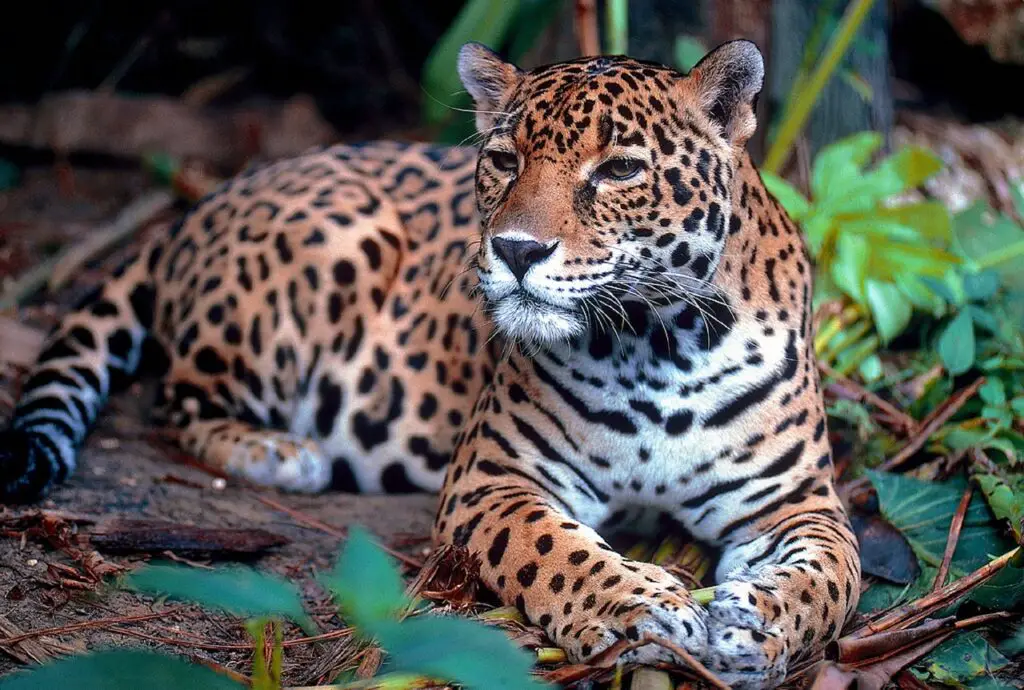
1. Jaguar (Panthera onca)
- The jaguar, native to the rainforests of Central and South America, is an apex predator known for its vital role in maintaining ecological balance by controlling prey populations and smaller predators. Its presence in these lush ecosystems helps preserve biodiversity.
- Location: Found in rainforests of Central and South America, including the Amazon Basin.
- Habitat Type: They inhabit various rainforest types, from lowland tropical rainforests to montane forests.
- Role in Ecosystem: Jaguars are apex predators, regulating prey populations like herbivores and controlling smaller predators. Their presence helps maintain a balanced ecosystem by preventing overgrazing and mesopredator release, thereby contributing to overall biodiversity.
- Trophic Level: Apex Predator (Top of the food chain).
- Ecological Significance: Controls prey populations, regulates smaller predators, and contributes to overall biodiversity by maintaining a balanced ecosystem.
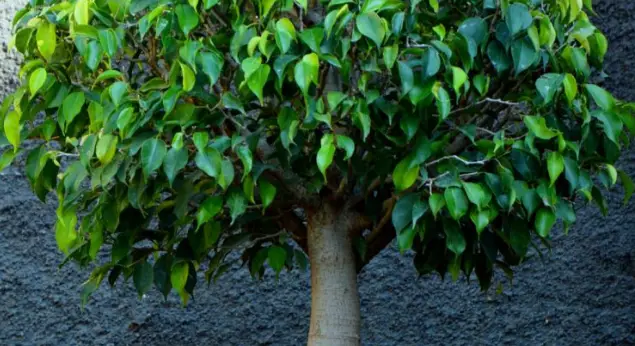
2. Fig Trees (Ficus spp.)
- Fig trees, distributed across rainforests in Africa, Southeast Asia, and the Americas, stand as keystone species due to their capacity to support a variety of animal species, facilitating mutualistic relationships and promoting biodiversity through their fruit production.
- Location: Distributed across rainforests in Africa, Southeast Asia, and the Americas.
- Habitat Type: Fig trees are integral to tropical rainforest ecosystems, often found in the understory.
- Role in Ecosystem: These trees provide a vital food source for a wide range of animals, such as birds, bats, and primates. Many species of fig trees rely on specific pollinator wasps for reproduction, creating a unique mutualistic relationship, making them keystone species by promoting biodiversity.
- Trophic Level: Producer.
- Ecological Significance: These trees support a diverse range of animals by providing a food source, creating mutualistic relationships, and promoting biodiversity through their fruit production.
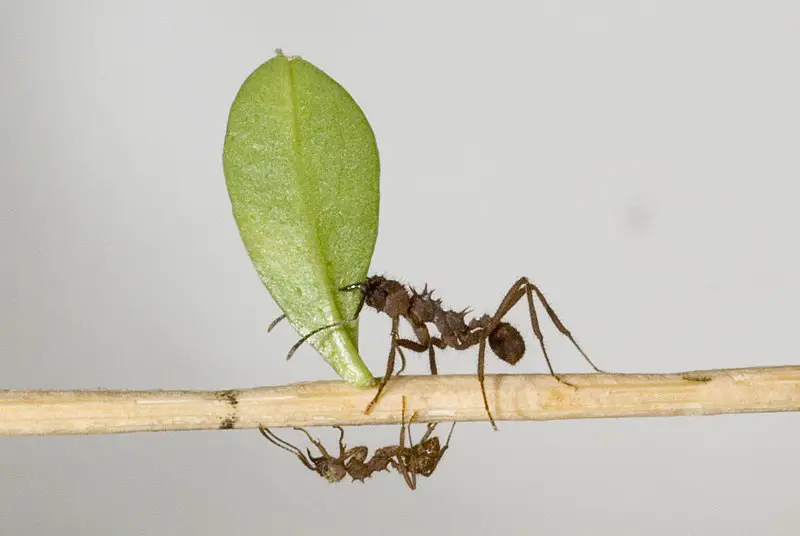
3. Leafcutter Ants (Acromyrmex spp.)
- Native to Central and South American rainforests, leafcutter ants are remarkable ecological engineers, significantly impacting nutrient cycling and soil enrichment through their leaf-cutting and fungal cultivation activities.
- Location: Native to Central and South American rainforests.
- Habitat Type: They thrive in the forest understory and are known for their elaborate underground colonies.
- Role in Ecosystem: Leafcutter ants are ecological engineers, playing a crucial role in nutrient cycling. They cut and carry fresh plant material into their underground nests, accelerating decomposition and enriching the soil. This process has far-reaching impacts on plant growth and ecosystem health.
- Trophic Level: Primary consumer.
- Ecological Significance: Leafcutter ants act as ecological engineers, influencing nutrient cycling and soil enrichment through their leaf-cutting and fungal cultivation activities.
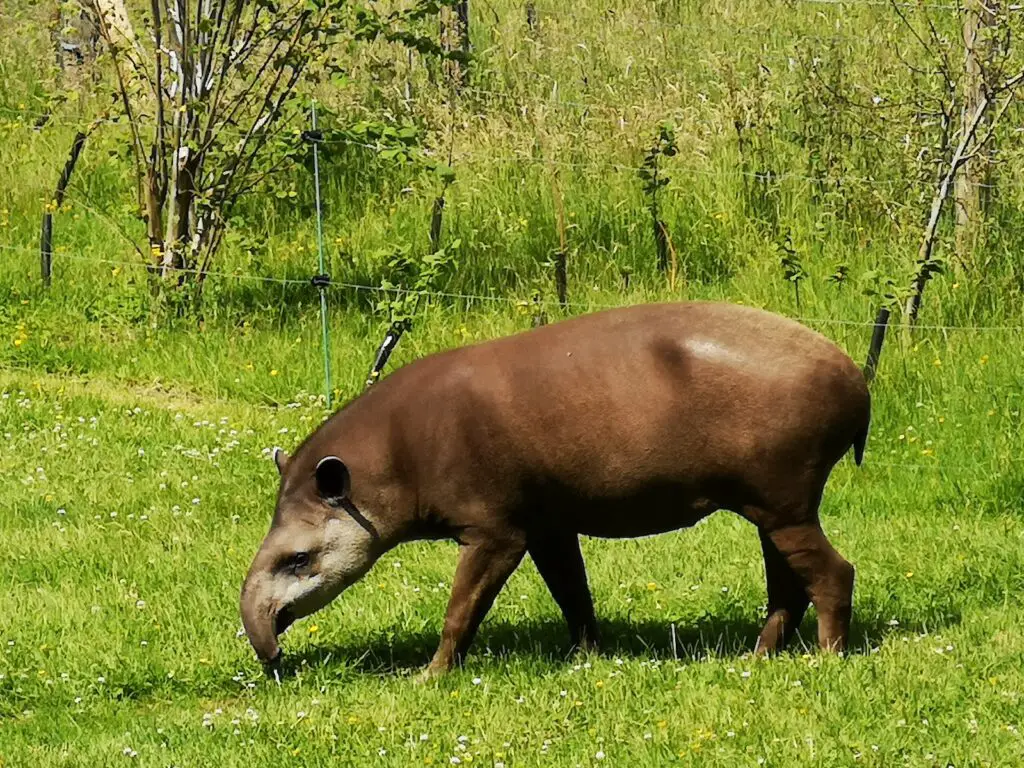
4. Tapirs (Tapirus spp.)
- Found in the rainforests of Central and South America and Southeast Asia, tapirs serve as vital seed dispersers, helping regenerate the forest by dispersing seeds through their consumption of a variety of fruits.
- Location: Inhabit rainforests in Central and South America and Southeast Asia.
- Habitat Type: Tapirs are primarily found in the dense understory and along water bodies in rainforests.
- Role in Ecosystem: Tapirs are considered “gardeners” of the forest. They consume a wide variety of fruits and disperse seeds over long distances through their dung. This seed dispersal is critical for forest regeneration and maintaining plant diversity.
- Trophic Level: Primary consumer, seed disperser.
- Ecological Significance: Tapirs are essential seed dispersers, aiding in forest regeneration by dispersing seeds through their consumption of various fruits, contributing to plant diversity.
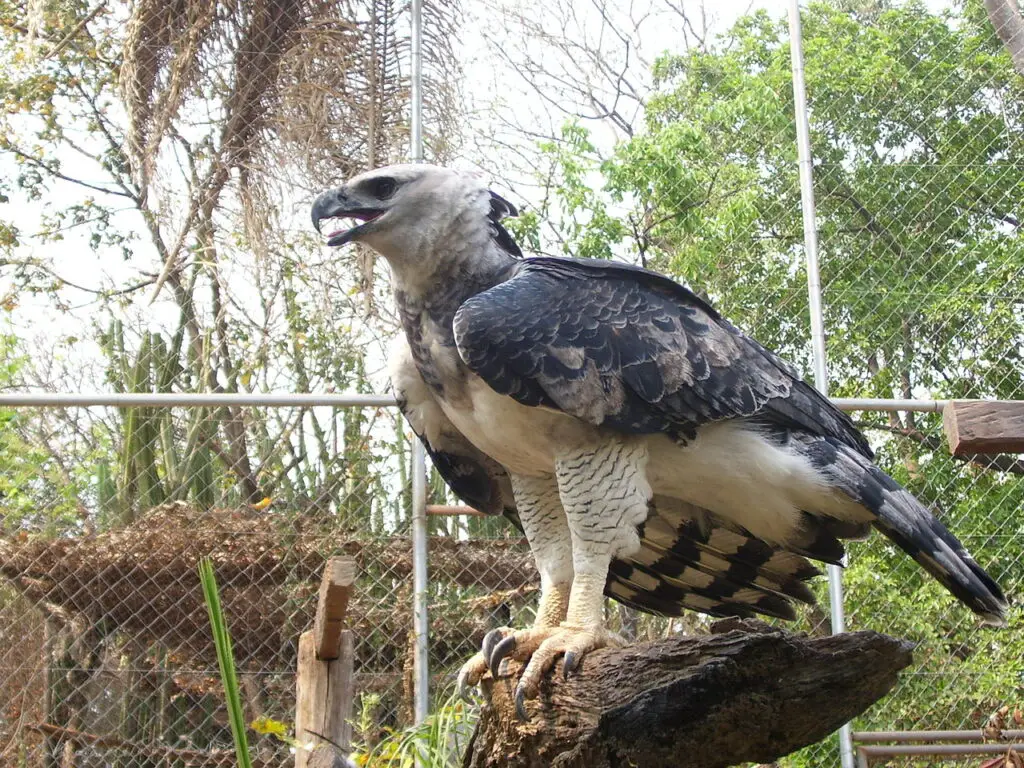
5. Harpy Eagle (Harpia harpyja)
- Inhabiting the neotropical rainforests of Central and South America, the harpy eagle, as an apex predator, plays a critical role in controlling populations of arboreal mammals and birds, thereby shaping the ecological dynamics of the rainforest.
- Location: Occurs in the neotropical rainforests of Central and South America.
- Habitat Type: These eagles inhabit the canopy and emergent layers of tall rainforest trees.
- Role in Ecosystem: As an apex predator, harpy eagles help control populations of arboreal mammals and birds. Their presence influences the behavior and abundance of their prey, thus affecting the overall composition and dynamics of the rainforest’s avian and mammalian communities.
- Trophic Level: Apex predator.
- Ecological Significance: As an apex predator, harpy eagles control populations of arboreal mammals and birds, thus shaping the ecological dynamics of the rainforest.

6. Bamboo (Various species)
- Bamboo, present in rainforests across Asia, South America, and Africa, influences the forest structure by providing both food and structural support for a variety of species, enhancing the biodiversity of these ecosystems.
- Location: Found in rainforests across Asia, South America, and Africa.
- Habitat Type: Bamboo can be found in the understory and forest floor of diverse rainforest types.
- Role in Ecosystem: Bamboo is a critical food source for various animals, including giant pandas in Asia. It also provides structural support for other plants, influencing the composition of understory vegetation.
- Trophic Level: Producer.
- Ecological Significance: Bamboo provides food and structural support, influencing the forest’s structure and enhancing biodiversity by serving as a resource for various species.
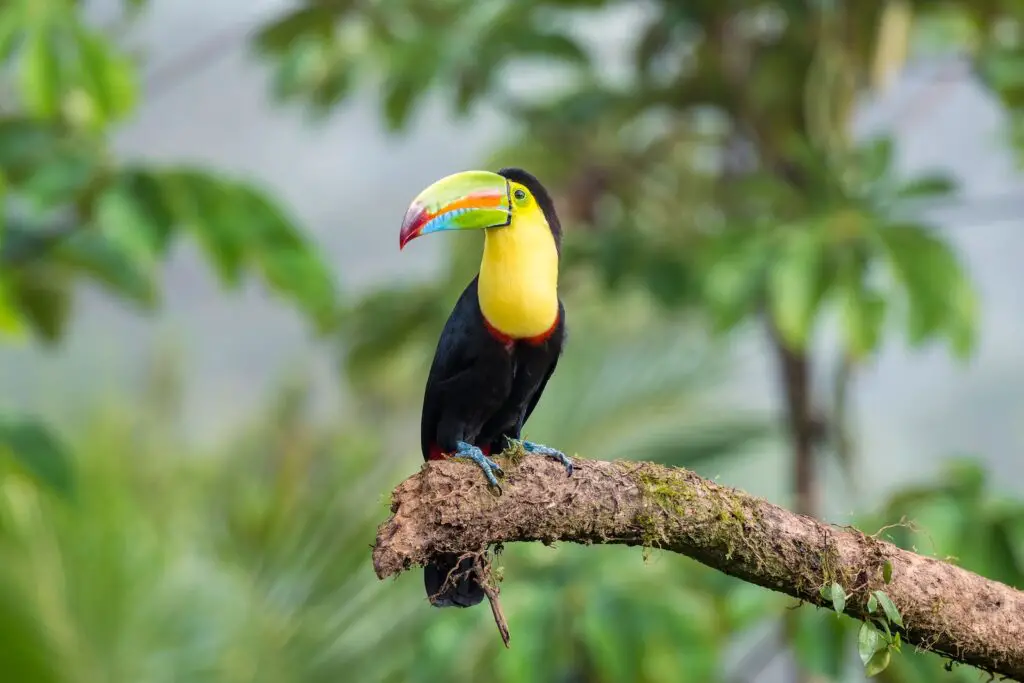
7. Keel-billed Toucan (Ramphastos sulfuratus)
- Native to Central and South American rainforests, the keel-billed toucan plays a pivotal role in seed dispersal through its consumption of fruits, contributing to forest regeneration and plant diversity.
- Location: Native to Central and South American rainforests.
- Habitat Type: These colorful birds inhabit the canopy and mid-story layers of the rainforest.
- Role in Ecosystem: Keel-billed toucans are important seed dispersers, especially for larger fruits. Their feeding habits promote forest regeneration and plant diversity.
- Trophic Level: Primary consumer, seed disperser.
- Ecological Significance: These toucans play a pivotal role in seed dispersal through fruit consumption, contributing to forest regeneration and plant diversity.
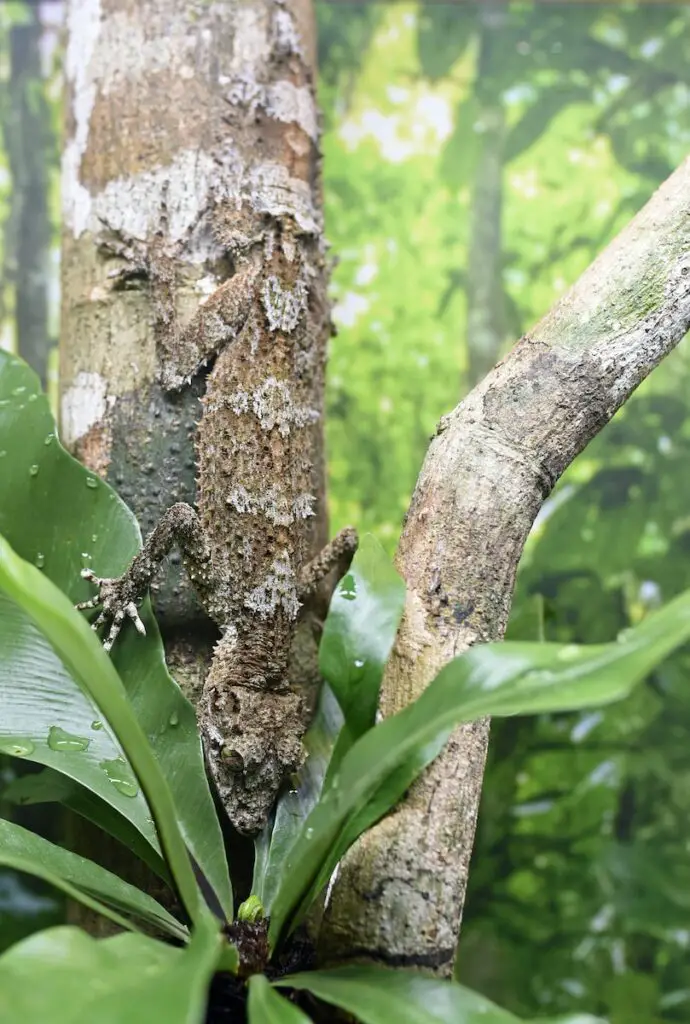
8. Leaf-tailed Geckos (Uroplatus spp.)
- Found in the rainforests of Madagascar, leaf-tailed geckos are essential in controlling insect populations, thus influencing the overall health and balance of the forest ecosystem.
- Location: Found in the rainforests of Madagascar.
- Habitat Type: These geckos are arboreal and perfectly camouflaged in the leafy environment.
- Role in Ecosystem: Leaf-tailed geckos play a crucial role in insect control by preying on insects, contributing to the maintenance of insect populations in the rainforest.
- Trophic Level: Secondary consumer.
- Ecological Significance: Leaf-tailed geckos contribute to insect control in the rainforest, influencing the overall health and balance of the ecosystem.
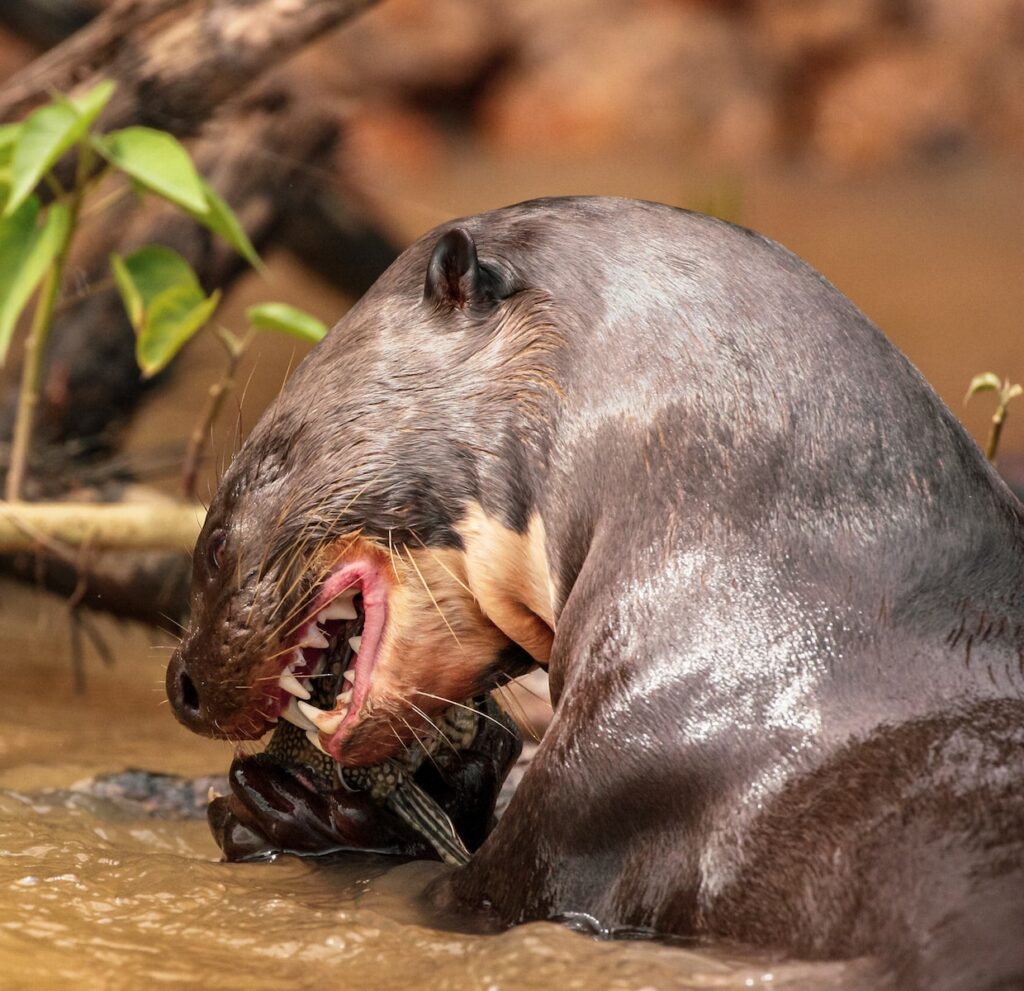
9. Giant Otter (Pteronura brasiliensis)
- Inhabiting the Amazonian rainforests of South America, giant otters maintain aquatic ecosystem balance by controlling fish populations, preserving the ecological health of the rivers and lakes within the rainforest.
- Location: Native to South American Amazonian rainforests.
- Habitat Type: Giant otters inhabit freshwater ecosystems within the rainforest.
- Role in Ecosystem: These apex predators help maintain fish populations in rivers and lakes, ensuring a balance in aquatic ecosystems. Their presence can indirectly affect the abundance of other aquatic species.
- Trophic Level: Carnivore.
- Ecological Significance: Giant otters help maintain aquatic ecosystem balance by controlling fish populations, preserving the ecological health of rivers and lakes in the rainforest.
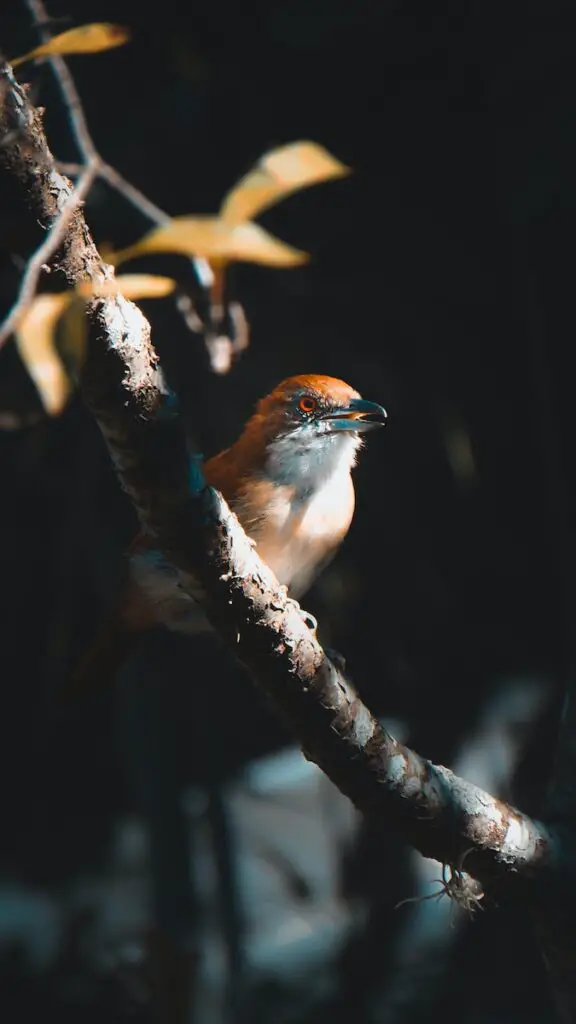
10. Antbirds (Various species)
- Occupying the Central and South American rainforests, antbirds are key contributors to insect control. They follow army ants to capture flushed insects, impacting the insect community and overall forest health.
- Location: Antbirds are found in rainforests across Central and South America.
- Habitat Type: They occupy the understory and lower canopy levels.
- Role in Ecosystem: Antbirds are essential in controlling insect populations, particularly ants. They have a mutualistic relationship with army ants, following them to capture flushed insects, which can have cascading effects on the insect community and forest health.
- Trophic Level: Insectivore.
- Ecological Significance: Antbirds are essential for controlling insect populations in the rainforest, as they follow army ants to capture flushed insects, contributing to the overall forest health and balance.
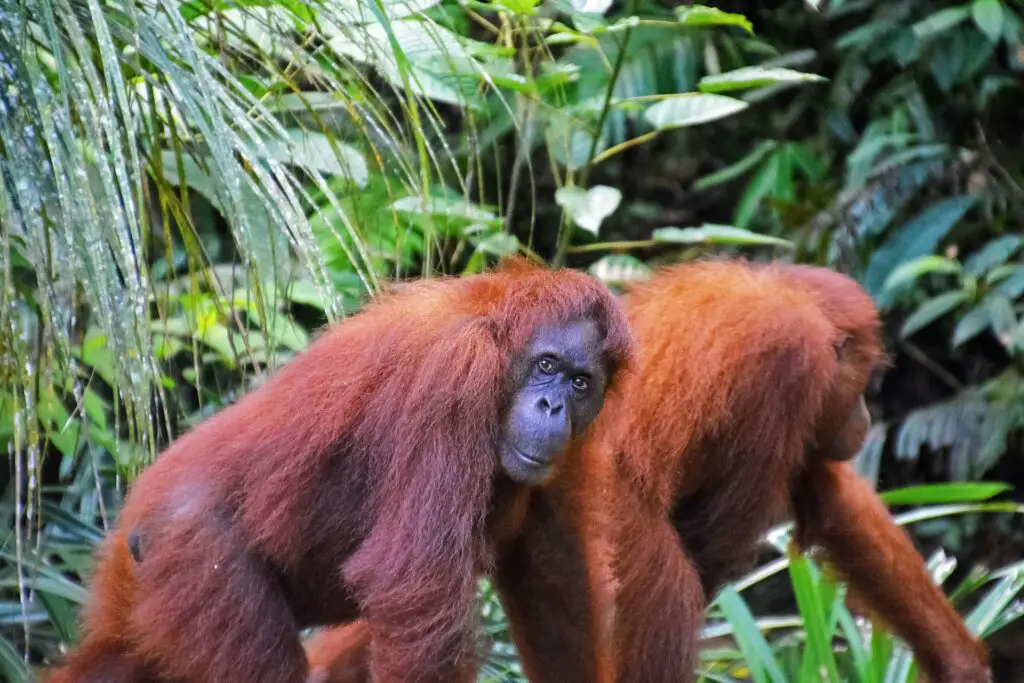
11. Orangutan (Pongo spp.)
- The orangutan, residing in the rainforests of Southeast Asia, particularly Borneo and Sumatra, is renowned for its role in forest regeneration, as it disperses seeds over significant distances, contributing to plant diversity.
- Location: Found in the rainforests of Southeast Asia, primarily in Borneo and Sumatra.
- Habitat Type: Orangutans are arboreal, primarily inhabiting the canopy of tropical rainforests.
- Role in Ecosystem: These primates are important seed dispersers, as they consume a variety of fruits and disperse seeds over significant distances, contributing to forest regeneration and diversity.
- Trophic Level: Primary consumer, seed disperser.
- Ecological Significance: Orangutans are pivotal in forest regeneration by dispersing seeds over significant distances, contributing to plant diversity and the overall health of the rainforest.
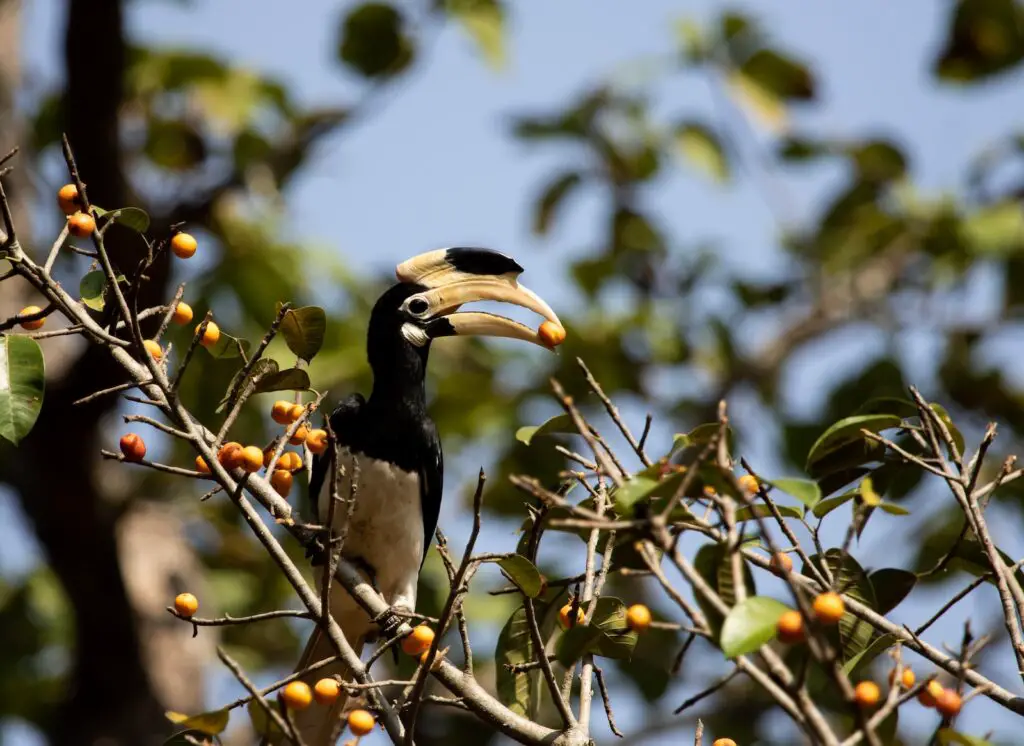
12. Toucan-fruiting Tree (Various species)
- These trees, found in Neotropical rainforests of Central and South America, provide essential food sources for various rainforest animals, promoting biodiversity through their large, fleshy fruits.
- Location: These trees are found in Neotropical rainforests, particularly in Central and South America.
- Habitat Type: Toucan-fruiting trees can be found in the canopy and understory.
- Role in Ecosystem: These trees produce large, fleshy fruits that are important food sources for a variety of animals, including birds and mammals, contributing to the rainforest’s biodiversity.
- Trophic Level: Producer.
- Ecological Significance: These trees provide essential food sources for various rainforest animals, promoting biodiversity through their large, fleshy fruits.
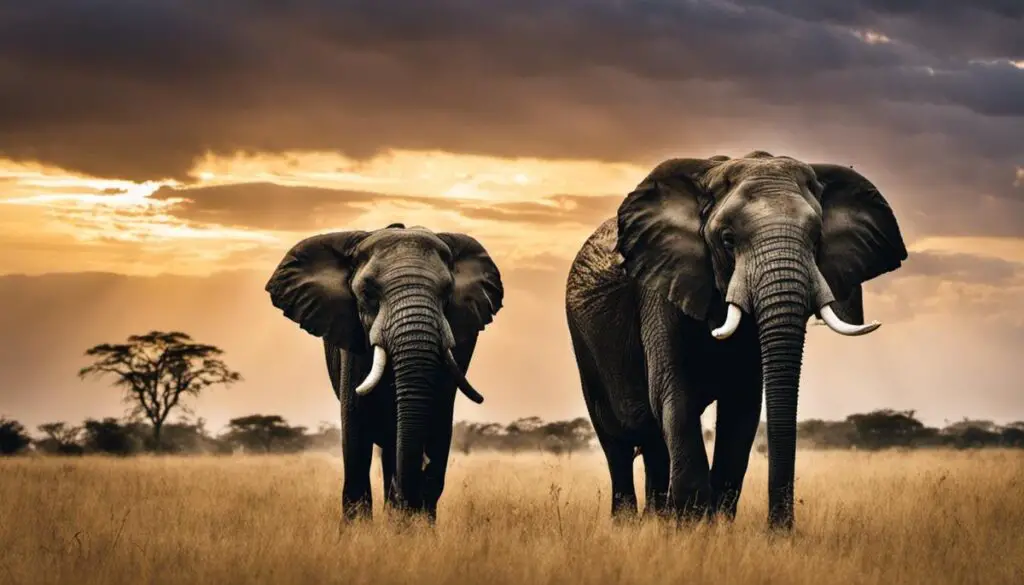
13. African Elephant (Loxodonta africana and Loxodonta cyclotis)
- In the rainforests of Central and West Africa, African elephants shape the forest structure by their feeding and movement, creating clearings that support plant growth and enhance overall forest health.
- Location: Inhabits the rainforests of Central and West Africa.
- Habitat Type: African elephants can be found in a range of forest habitats, including lowland and montane rainforests.
- Role in Ecosystem: These massive herbivores shape the forest structure through their feeding and movement, creating clearings that promote the growth of various plant species and enhancing overall forest health.
- Trophic Level: Primary consumer, ecosystem engineer.
- Ecological Significance: African elephants shape the forest structure through their feeding and movement, creating clearings that support plant growth and enhance overall forest health.
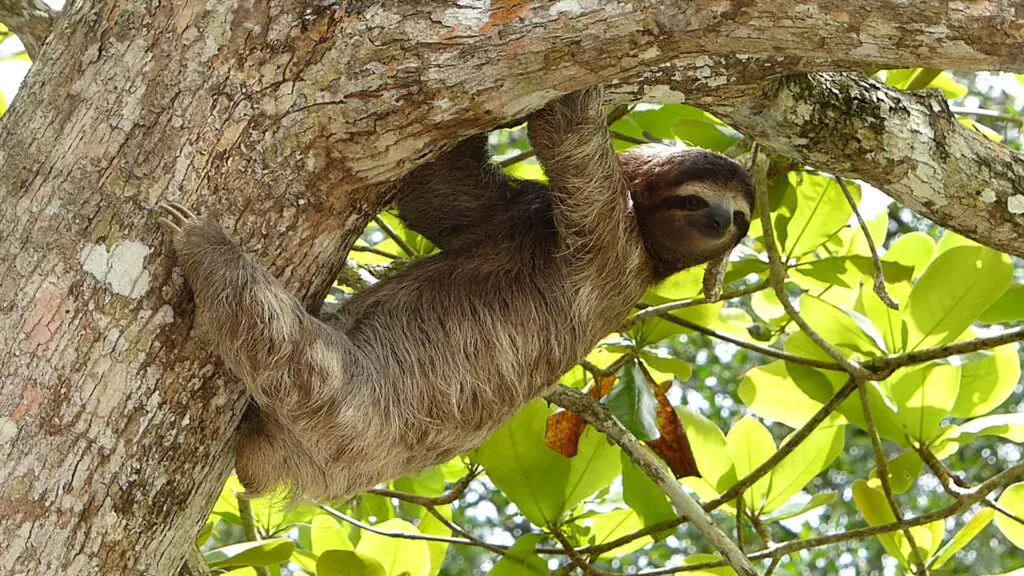
14. Sloths (Various species)
- Sloths, found in Central and South American rainforests, are known for their leisurely pace and leafy diet. They help maintain vegetation balance in the rainforest by limiting the growth of certain plant species, contributing to plant diversity.
- Location: Sloths are found in Central and South American rainforests.
- Habitat Type: They are primarily arboreal, residing in the canopy and understory.
- Role in Ecosystem: Sloths are known for their slow movement and a diet composed mostly of leaves, which helps maintain the rainforest’s vegetation by limiting the growth of certain plant species, contributing to plant diversity.
- Trophic Level: Herbivore.
- Ecological Significance: Sloths help maintain vegetation balance in the rainforest by limiting the growth of certain plant species through their leafy diet, contributing to plant diversity.
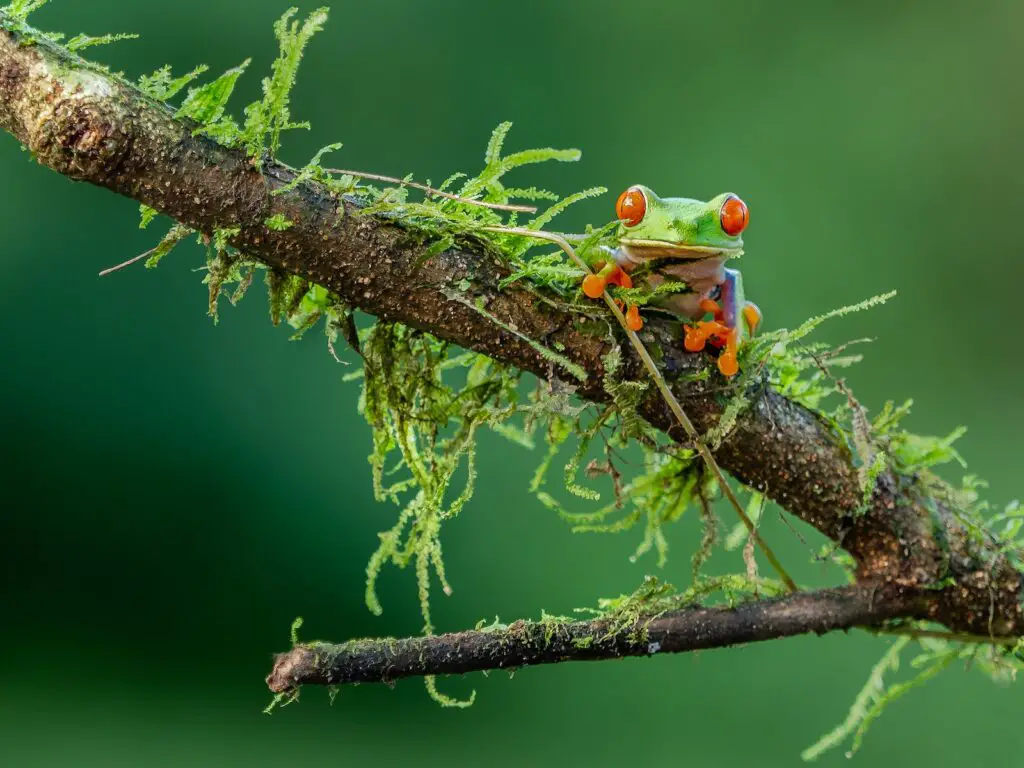
15. Red-eyed Tree Frog (Agalychnis callidryas)
- Native to Central American rainforests, the red-eyed tree frog contributes to insect control by preying on various insects and serves as prey for other rainforest predators, influencing the overall ecosystem balance.
- Location: Native to the rainforests of Central America.
- Habitat Type: These frogs are arboreal, residing in the canopy and foliage of rainforest trees.
- Role in Ecosystem: Red-eyed tree frogs play a role in controlling insect populations and serve as prey for various rainforest predators, contributing to the overall balance of the ecosystem.
- Trophic Level: Insectivore.
- Ecological Significance: These frogs contribute to insect control by preying on various insects and serve as prey for other rainforest predators, influencing the overall ecosystem balance.

16. Common Vampire Bat (Desmodus rotundus)
- These bats, inhabiting Central and South American rainforests, play a unique role in the ecosystem as blood-feeding mammals. They influence host species populations and may indirectly limit the spread of diseases among these species.
- Location: Found in the rainforests of Central and South America.
- Habitat Type: They roost in caves and trees in rainforest environments.
- Role in Ecosystem: Vampire bats feed on the blood of various animals, which can regulate the populations of host species and potentially limit the spread of diseases among them.
- Trophic Level: Blood-feeding mammal.
- Ecological Significance: Vampire bats play a unique role in regulating host species populations and potentially limiting the spread of diseases among these species.
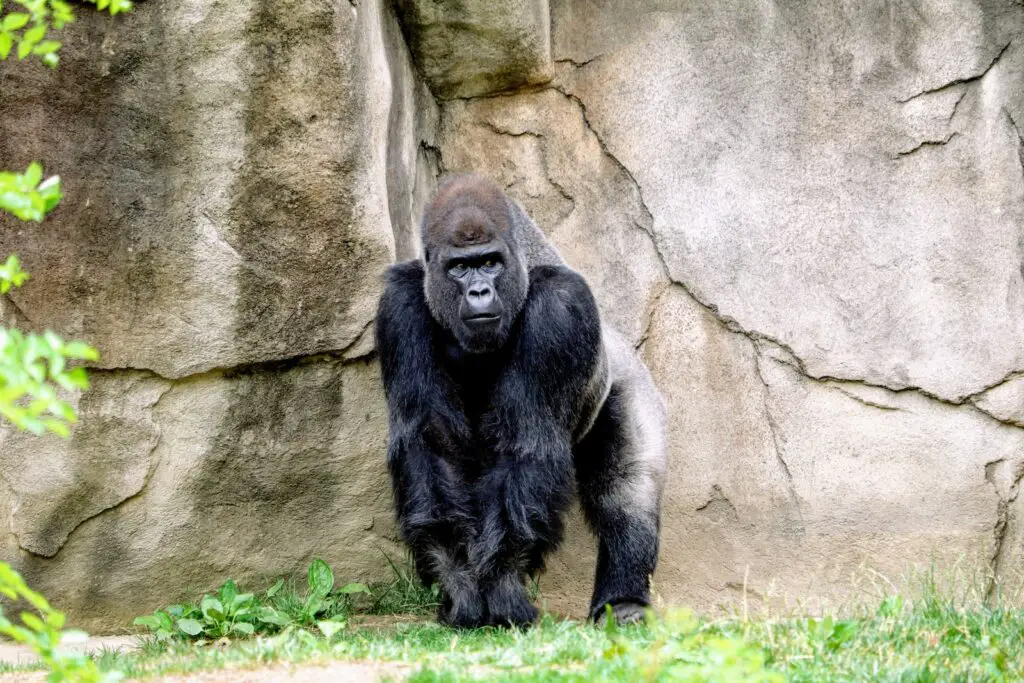
17. Gorilla (Gorilla spp.)
- In Central and West African rainforests, gorillas impact the forest’s regeneration by dispersing seeds through their dietary habits and shape the vegetation structure, making them vital to the ecosystem’s health.
- Location: Inhabits the rainforests of Central and West Africa.
- Habitat Type: Gorillas primarily occupy the understory and forest floor of these rainforest regions.
- Role in Ecosystem: Gorillas influence forest regeneration by dispersing seeds through their dietary habits, and their presence shapes the vegetation structure.
- Trophic Level: Primary consumer.
- Ecological Significance: Gorillas impact forest regeneration through seed dispersal, helping shape the vegetation structure and maintain plant diversity.
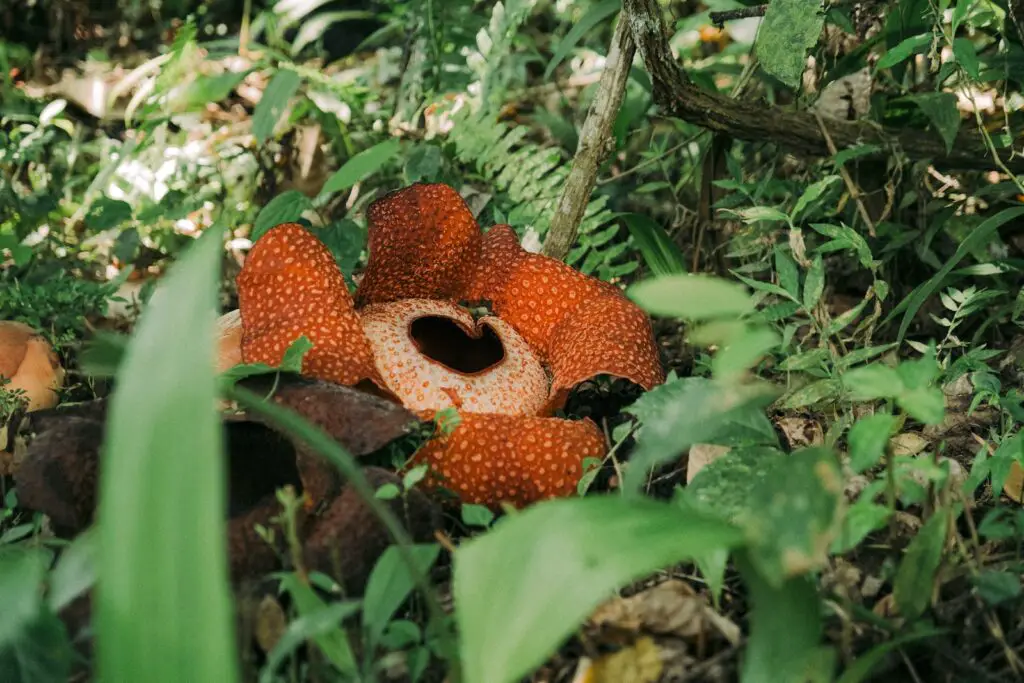
18. Rafflesia (Rafflesia spp.)
- Found in the rainforests of Southeast Asia, particularly in Borneo and Sumatra, Rafflesia species are intriguing parasitic plants with large, distinctive flowers that attract pollinators, contributing to the floral diversity of these rainforests.
- Location: Found in the rainforests of Southeast Asia, particularly in Borneo and Sumatra.
- Habitat Type: These parasitic plants grow in the understory of rainforests.
- Role in Ecosystem: Rafflesia species are known for their distinctive, large flowers that attract pollinators. They are a unique and important component of the rainforest’s floral diversity.
- Trophic Level: Parasitic plant.
- Ecological Significance: These parasitic plants with large, distinctive flowers attract pollinators, contributing to the floral diversity of rainforests.
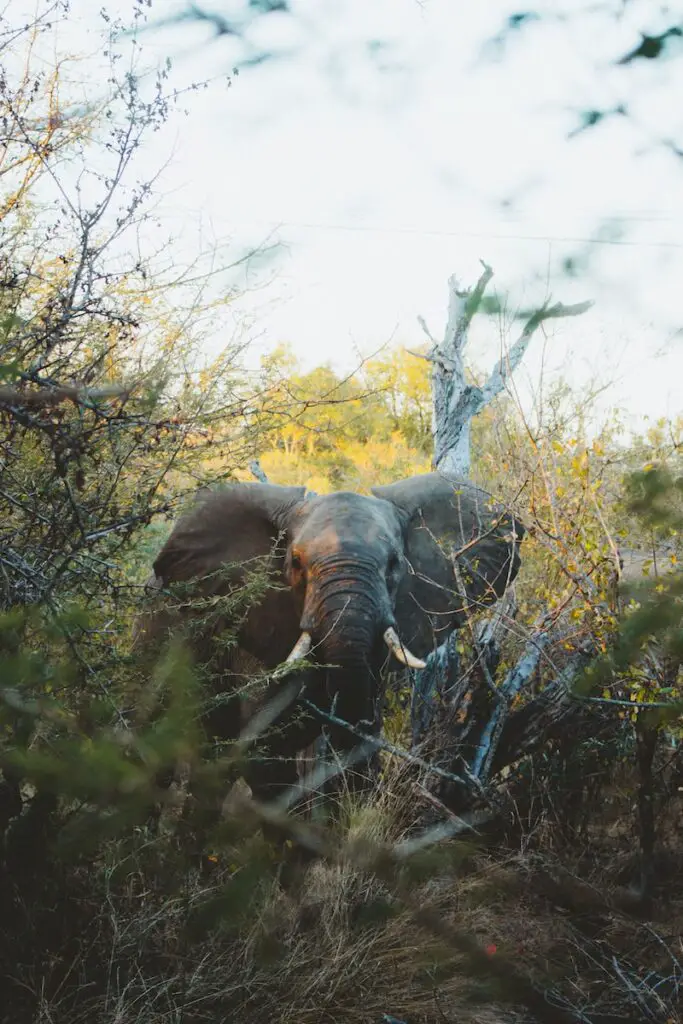
19. Forest Elephants (Loxodonta cyclotis)
- In the dense rainforests of Central and West Africa, forest elephants contribute to seed dispersal by consuming a wide variety of fruits and dispersing seeds, helping to maintain plant diversity in the rainforest.
- Location: Primarily inhabit the dense rainforests of Central and West Africa.
- Habitat Type: Forest elephants thrive in the undergrowth and dense vegetation of these rainforests.
- Role in Ecosystem: These elephants play a role in seed dispersal, as they consume a wide variety of fruits and disperse seeds, contributing to the maintenance of plant diversity in the rainforest.
- Trophic Level: Primary consumer, seed disperser.
- Ecological Significance: Forest elephants contribute to seed dispersal by consuming a wide variety of fruits, helping maintain plant diversity in the rainforest.
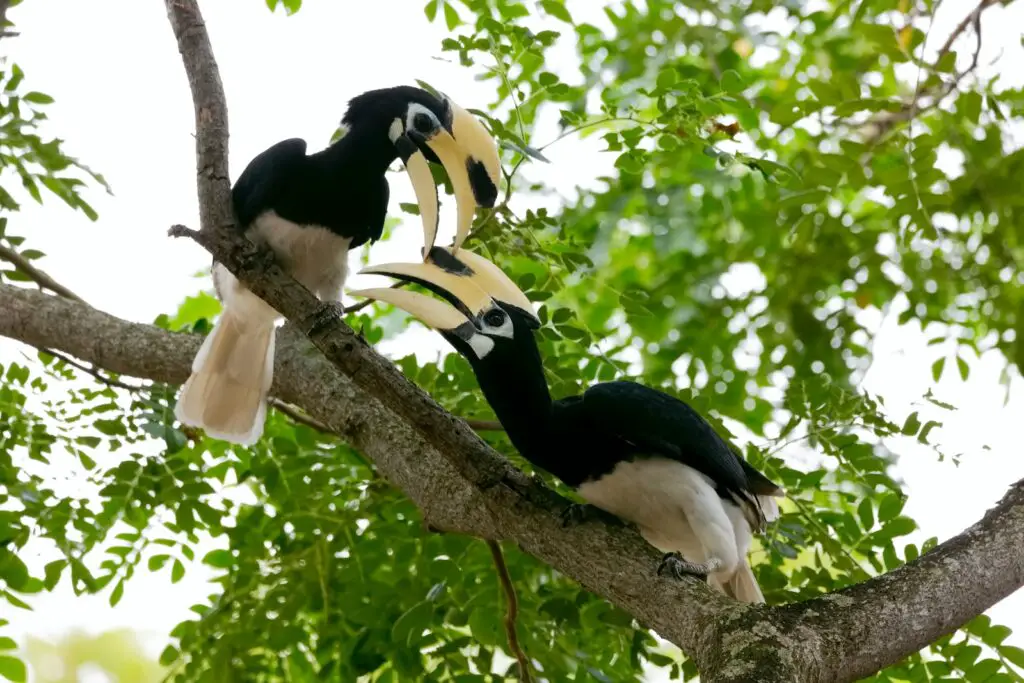
20. Hornbills (Various species)
- Hornbills, residing in rainforests across Asia, Africa, and Oceania, are key seed dispersers for large-seeded fruiting trees, promoting forest diversity through their vital role in the ecosystem.
- Location: Found in rainforests across Asia, Africa, and Oceania.
- Habitat Type: Hornbills are primarily canopy-dwelling birds in these rainforest ecosystems.
- Role in Ecosystem: Hornbills are essential seed dispersers, particularly for large-seeded fruiting trees, helping to maintain forest diversity.
- Trophic Level: Primary consumer, seed disperser.
- Ecological Significance: Hornbills are crucial seed dispersers, particularly for large-seeded fruiting trees, promoting forest diversity and health.
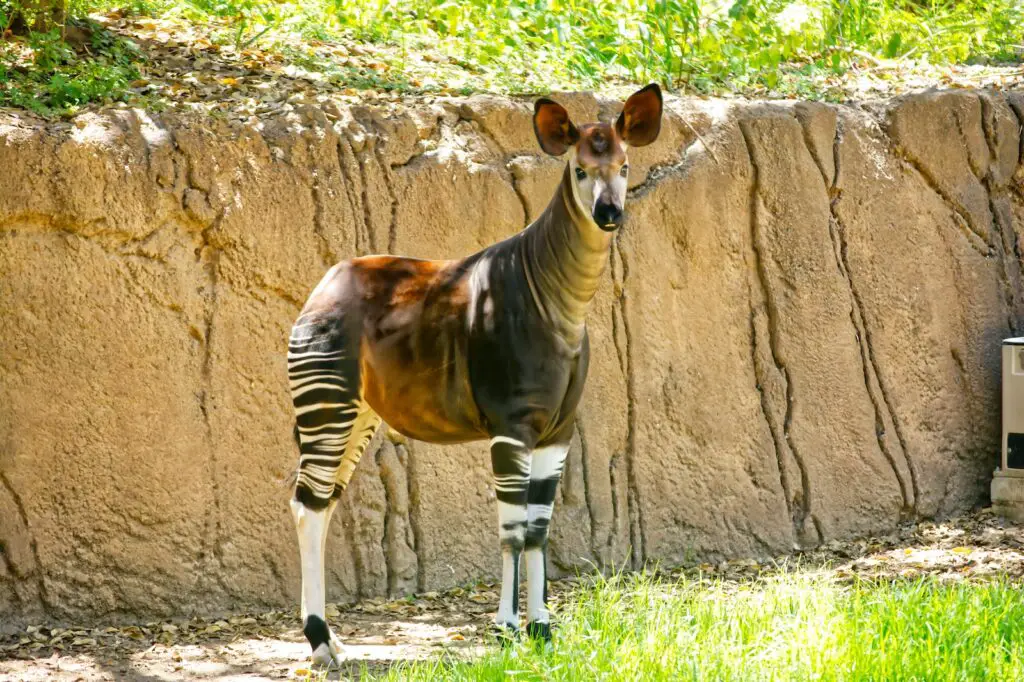
21. Okapi (Okapia johnstoni)
- Native to the rainforests of the Democratic Republic of Congo in Central Africa, okapis are browsers that impact the forest’s composition by selectively feeding on various plant species, influencing the overall ecosystem’s structure and diversity.
- Location: Native to the rainforests of the Democratic Republic of Congo in Central Africa.
- Habitat Type: Okapis are primarily found in the dense understory of equatorial rainforests.
- Role in Ecosystem: Okapis are browsers that feed on various plants, including understory vegetation. Their selective grazing can influence plant composition, which in turn affects the diversity and structure of the rainforest.
- Trophic Level: Herbivore.
- Ecological Significance: Okapis are browsers that selectively feed on various plant species, influencing the forest’s composition, structure, and diversity, making them vital to the ecosystem’s health.

